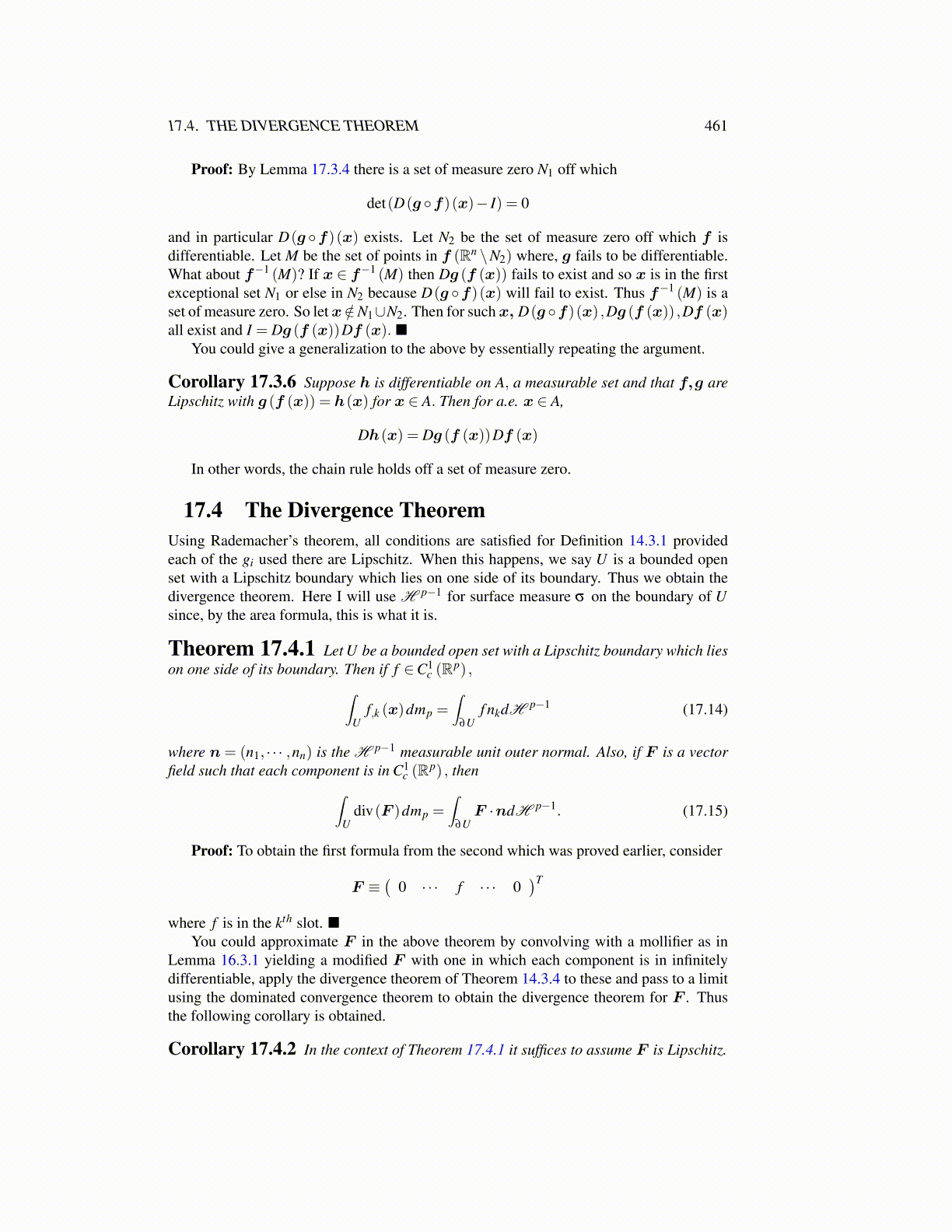
17.4. THE DIVERGENCE THEOREM 461
Proof: By Lemma 17.3.4 there is a set of measure zero N1 off which
det(D(g ◦f)(x)− I) = 0
and in particular D(g ◦f)(x) exists. Let N2 be the set of measure zero off which f isdifferentiable. Let M be the set of points in f (Rn \N2) where, g fails to be differentiable.What about f−1 (M)? If x ∈ f−1 (M) then Dg (f (x)) fails to exist and so x is in the firstexceptional set N1 or else in N2 because D(g ◦f)(x) will fail to exist. Thus f−1 (M) is aset of measure zero. So letx /∈N1∪N2. Then for suchx, D(g ◦f)(x) ,Dg (f (x)) ,Df (x)all exist and I = Dg (f (x))Df (x). ■
You could give a generalization to the above by essentially repeating the argument.
Corollary 17.3.6 Suppose h is differentiable on A, a measurable set and that f,g areLipschitz with g (f (x)) = h(x) for x ∈ A. Then for a.e. x ∈ A,
Dh(x) = Dg (f (x))Df (x)
In other words, the chain rule holds off a set of measure zero.
17.4 The Divergence TheoremUsing Rademacher’s theorem, all conditions are satisfied for Definition 14.3.1 providedeach of the gi used there are Lipschitz. When this happens, we say U is a bounded openset with a Lipschitz boundary which lies on one side of its boundary. Thus we obtain thedivergence theorem. Here I will use H p−1 for surface measure σ on the boundary of Usince, by the area formula, this is what it is.
Theorem 17.4.1 Let U be a bounded open set with a Lipschitz boundary which lieson one side of its boundary. Then if f ∈C1
c (Rp) ,∫U
f,k (x)dmp =∫
∂Uf nkdH p−1 (17.14)
where n = (n1, · · · ,nn) is the H p−1 measurable unit outer normal. Also, if F is a vectorfield such that each component is in C1
c (Rp) , then∫U
div(F )dmp =∫
∂UF ·ndH p−1. (17.15)
Proof: To obtain the first formula from the second which was proved earlier, consider
F ≡(
0 · · · f · · · 0)T
where f is in the kth slot. ■You could approximate F in the above theorem by convolving with a mollifier as in
Lemma 16.3.1 yielding a modified F with one in which each component is in infinitelydifferentiable, apply the divergence theorem of Theorem 14.3.4 to these and pass to a limitusing the dominated convergence theorem to obtain the divergence theorem for F . Thusthe following corollary is obtained.
Corollary 17.4.2 In the context of Theorem 17.4.1 it suffices to assume F is Lipschitz.